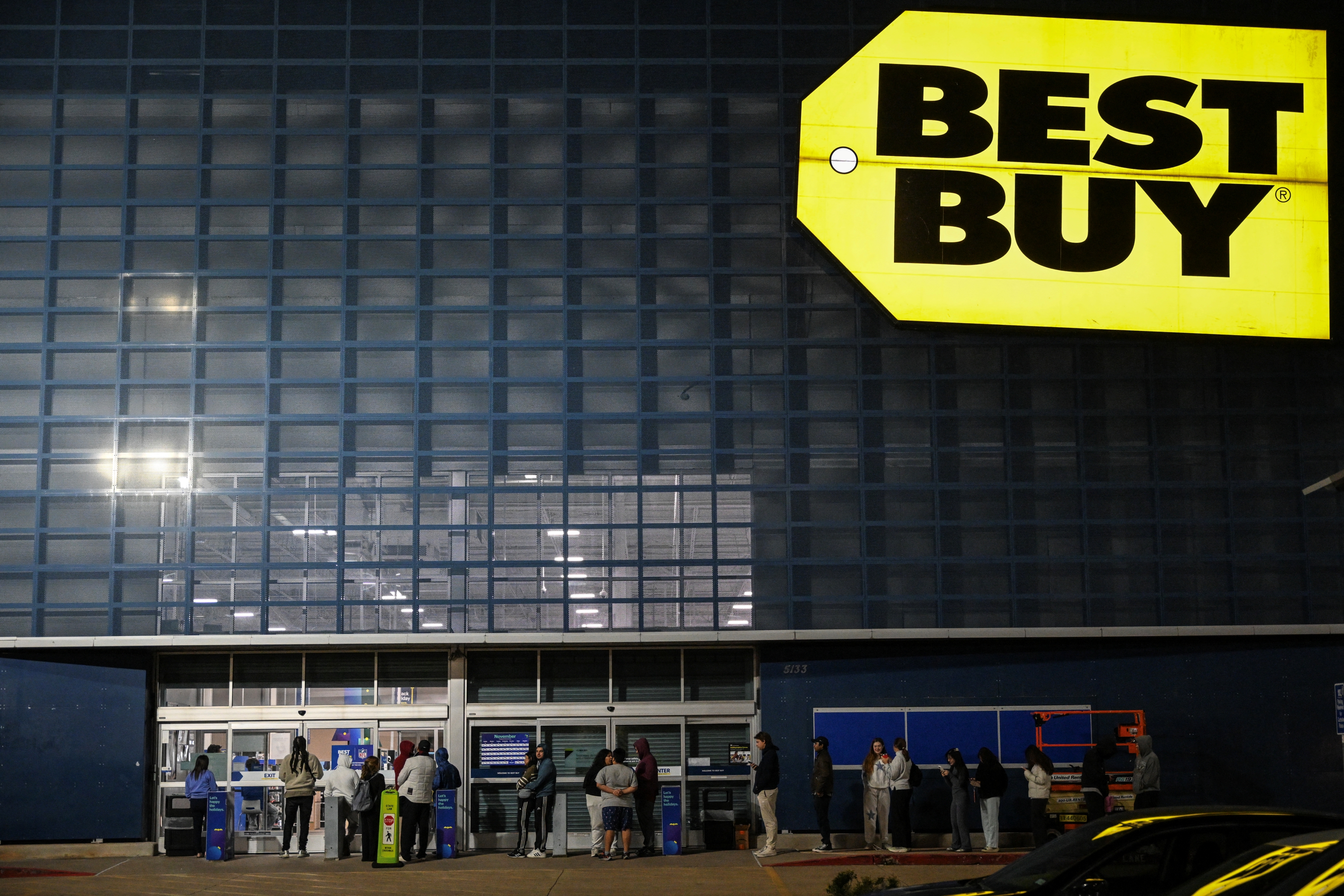Amazon’s Try Before You Buy Is Ending — Here Are the Best Alternatives in 2025
As Amazon phases out its Try Before You Buy program, these stores still let you try items at home before committing to a purchase.


Amazon shoppers who are fans of the company's "try before you buy" program got a rude awakening when they tried to log into their accounts this month.
The brand posted a subtle notice at the top of the landing page that read, "Prime Try Before You Buy will end on 01/31/2025. Shop Amazon Fashion to find our full selection of fashion items." The notice offered little insight as to why the program was ending, but Amazon reps confirmed it's all part of CEO Andy Jassy's effort to cut down on costs at the company.
The company also cited the increase of AI technology that allows customers to better predict their fit sizes as a reason for shuttering the program. "Given the combination of Try Before You Buy only scaling to a limited number of items and customers increasingly using our new AI-powered features like virtual try-on, personalized size recommendations, review highlights, and improved size charts to make sure they find the right fit, we’re phasing out the Try Before You Buy option, effective January 31, 2025," Amazon reps told CNBC.
While Amazon attributes the decision to advancements in AI-powered sizing tools, the move also reflects a broader trend in retail. Many companies are reassessing the cost-effectiveness of free returns and try-before-you-buy programs, signaling a shift toward policies that prioritize profitability and sustainability.
Why retailers are ending free returns and try-before-you-buy programs
In recent years, several major retailers, including Macy’s, Abercrombie, J.Crew, H&M, Nordstrom and Amazon, have quietly begun rolling back their once-generous free shipping and return policies in an effort to cut costs and reduce logistical burdens. Some retailers charge a return processing fee unless customers opt to return items in-store, while others no longer accept returns on certain sale or clearance items.
One reason behind these policy changes is the rising cost of reverse logistics, the process of handling returned merchandise. Retailers have to cover shipping, inspection, repackaging and restocking costs, which can add up quickly, especially with high return rates in fashion and footwear.
As sustainability becomes a bigger focus, many brands are rethinking the environmental impact of free returns. Millions of returned items end up in landfills each year. Some companies are steering customers toward subscription-based clothing and accessory rental services, like Nuuly or Rent the Runway.
Try before you buy: Brands still offering the service in 2025

As anyone who doesn't fit the "traditional" retail body type knows, sometimes you just need to experience a product in real life to know if it's going to suit you. If that sounds like you, there are still a few online shopping options that allow you to get products delivered to your door before having to shell out the cash to ship them there.
Here are a few retailers still offering try before you buy programs:
Stitch Fix
Stitch Fix, which created its business model on the try before you buy concept, is still offering clothing delivery and styling services that are sent to your door without having to commit to a purchase.
Once you get your box of clothing delivered, you can try on the pieces and only pay for those you wish to keep. If you keep an item from the box, the $20 fee goes to paying for that item. If you keep nothing from the box, you have to eat the $20 fee.
Warby Parker
Warby Parker allows you to try on pairs of eyeglasses and sunglasses for free with free shipping included both ways. From there, you can decide which items you keep or which you want to order prescription lenses for, thanks to the ease of a pre-paid postage label included in your purchase.
Trendsend
Similar to StitchFix, Trendsend is another try before you buy styling service that costs $20. You start with an online quiz to help determine your preferences. Try on the items sent to you, and choose to keep or send them back. The $20 goes towards any items you purchase, and the cost is eaten if you buy nothing. However, the first trial styling box is just $1.
Strategies for smarter online shopping
As free returns become less common and shopping evolves, these tips can help you adapt and get the most out of online shopping:
- Try it on Virtually. Many brands, like Sephora and Walmart, offer AI-driven virtual try-on technology that allows customers to see how makeup, glasses, shoes or clothing might look before committing to a purchase. While not perfect, these tools can help reduce the chances of buying the wrong item.
- Prioritize retailers with generous return policies. While many companies are introducing return fees, some still offer free in-store returns or longer return windows. Checking a brand’s return policy before making a purchase can save money and frustration.
- Use size recommendation apps. Try using a platform like True Fit or Fit Analytics to help ensure a better fit. These tools analyze past purchases and customer feedback to provide personalized size suggestions.
While free returns and try-before-you-buy options are becoming less common, taking advantage of virtual tools and carefully reviewing retailer policies can help ensure a smoother shopping experience with fewer returns.
RELATED CONTENT
Profit and prosper with the best of Kiplinger's advice on investing, taxes, retirement, personal finance and much more. Delivered daily. Enter your email in the box and click Sign Me Up.

Brittany Leitner is a freelance journalist with over 10 years of experience in lifestyle, health, and more. She received a Digital Health Award for her reporting in 2019 as well as numerous awards for her work in poetry. She previously held positions as senior editor at Elite Daily and managing editor at The Dr. Oz Show. Follow her online @britariail.
-
 4 Great Tools to DIY Your Own Financial Plan
4 Great Tools to DIY Your Own Financial PlanSmart Savings Several tools picked out by Kiplinger that DIYers can use to make their own financial plan.
-
 The 7-Month Deadline That Sets Your Lifetime Medicare Premiums
The 7-Month Deadline That Sets Your Lifetime Medicare PremiumsUnderstanding Medicare enrollment is crucial, as missing deadlines can lead to permanent late enrollment penalties and gaps in coverage.
-
 Retirees Living in Portugal: You Need a Post-NHR Tax Strategy
Retirees Living in Portugal: You Need a Post-NHR Tax StrategyWhen your 10-year Non-Habitual Resident tax break ends, you could see your tax rate soar. Take steps to plan for this change well before the NHR window closes.
-
 Verizon’s 4-Line Phone Promo Offers Strong Value for Families Upgrading to Premium Devices
Verizon’s 4-Line Phone Promo Offers Strong Value for Families Upgrading to Premium DevicesFamilies can upgrade to top-tier smartphones for $25 a line with Verizon’s newest offer.
-
 Top Tech Gifts to Grab at Walmart Before Christmas
Top Tech Gifts to Grab at Walmart Before ChristmasBig savings on Apple, Bose, HP, Vizio and more while there's still time to shop.
-
 The Top 22 Gifts for Grandkids from Walmart in 2025
The Top 22 Gifts for Grandkids from Walmart in 2025From PlayStation to Labubu, you'll find the hottest gifts of 2025 for your grandkids at Walmart this year. Some of them are up to 78% off.
-
 NordVPN’s Huge 77% Black Friday Discount Is One of the Top VPN Deals We’ve Seen This Year
NordVPN’s Huge 77% Black Friday Discount Is One of the Top VPN Deals We’ve Seen This YearSave up to 77% on NordVPN with this Black Friday deal, a practical choice for improving online security and streaming access.
-
 23 Best Buy Cyber Monday Deals That Are All 50% Off or Better
23 Best Buy Cyber Monday Deals That Are All 50% Off or BetterIn a sea of mediocre discounts, these Best Buy Cyber Monday deals slash 50% off or more on the latest tech.
-
 4 Black Friday Scams to Watch Out For
4 Black Friday Scams to Watch Out ForThe deals are heating up, but so are the scams. Here's how to spot some of the most common Black Friday scams this holiday season.
-
 Why This Year’s Black Friday Deals May Fall Short
Why This Year’s Black Friday Deals May Fall ShortFrom rising import duties to supply-chain cost creep, the discounts you expect may be smaller this year.
-
 Amazon Haul Gift Guide: Under-$20 Gifts That Keep Your Holiday Budget in Tact
Amazon Haul Gift Guide: Under-$20 Gifts That Keep Your Holiday Budget in TactFrom stocking stuffers to budget-friendly crowd pleasers, these are the best under-$20 gifts on Amazon Haul right now.